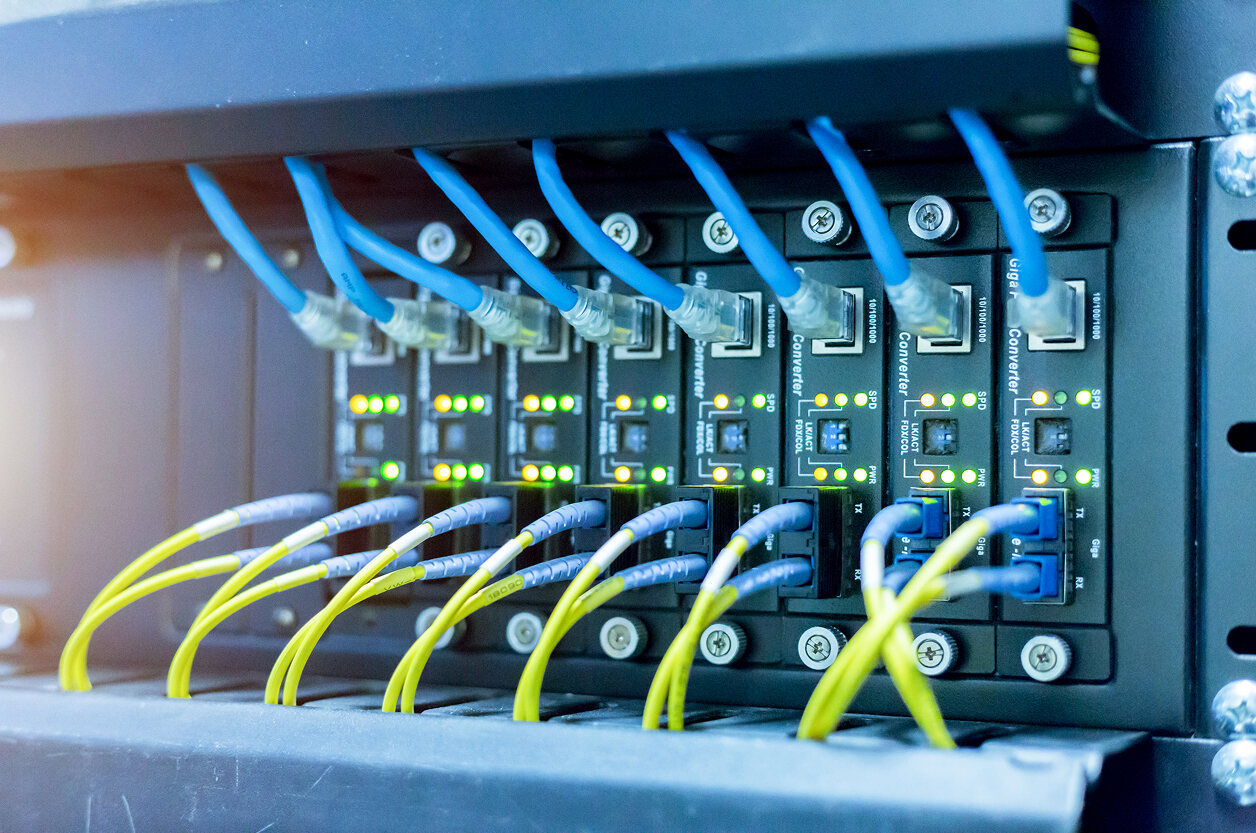AV-over-IP vs SDI: Why the Market Is Shifting to IP and How to Prepare

For decades, Serial Digital Interface (SDI) was the gold standard in professional video broadcasting. It was simple, reliable, and purpose-built for moving uncompressed video between cameras, switchers, and recorders. But in recent years, a massive shift has started to reshape how the AV industry handles signals — and it’s centered around AV-over-IP.
From Netflix production studios to sports arenas and corporate conference rooms, the transition to AV-over-IP is no longer theoretical. It’s happening now. But why is this transition accelerating, and what does it mean for hardware and software vendors?
What Is AV-over-IP and Why It Matters
AV-over-IP refers to the transmission of audio, video, and control signals over standard IP networks (usually Ethernet). Unlike SDI, which uses point-to-point cabling, AV-over-IP allows for far more flexible routing, scaling, and distribution using standard IT infrastructure.
This means:
- One cable for everything (video, audio, control, metadata)
- Lower cost at scale
- Easier integration with existing IT networks
- Support for distributed and remote workflows
In the age of remote production, live streaming, and smart buildings, these benefits are too significant to ignore.
SDI’s Strengths — and Its Limitations
SDI is known for its plug-and-play simplicity, low latency, and resilience. In high-pressure broadcast environments, it's trusted — and for good reason.
But SDI systems:
- Require expensive matrix switchers
- Scale poorly for multi-room or distributed systems
- Offer no native support for remote or cloud workflows
- Are tied to fixed bandwidths (HD-SDI, 3G-SDI, 12G-SDI, etc.)
This rigidity creates a bottleneck in an AV world that is becoming software-defined, virtualized, and IP-centric.
AV-over-IP in Practice: Use Cases in 2025
By 2025, AV-over-IP is used in:
- Corporate AV: Room-to-room content sharing and video walls
- Higher education: Centralized video distribution across campuses
- Sports arenas: Live replays, advertisements, and control-room-to-board routing
- Broadcast: Cloud production and NDI/ST 2110 workflows
- Retail: Digital signage with real-time updates from cloud platforms
Disney, BBC, and Netflix are all increasing their adoption of IP-based production tools. Even mid-sized studios are moving toward partial IP migration due to the benefits of virtual OB vans and decentralized teams.
AV-over-IP Standards: ST 2110, IPMX, and NDI
The transition wouldn't be viable without modern standards that define how AV signals behave over IP:
- ST 2110: Developed by SMPTE, used widely in broadcast. Enables full packetization of video, audio, and metadata streams.
- NDI: Widely adopted for low-cost video over IP, particularly in live production.
- IPMX: Emerging standard designed to bring the power of ST 2110 to ProAV with plug-and-play simplicity.
Choosing the right standard depends on your application. For broadcast: ST 2110. For hybrid and live: NDI. For installations: IPMX is gaining ground fast.
Key Benefits of Switching to AV-over-IP
- Flexibility: Use existing IT infrastructure to route signals anywhere
- Scalability: Add more sources and displays without rewiring
- Cost-efficiency: Eliminate proprietary switchers and expensive SDI routers
- Remote Control & Monitoring: Native support for IP-based control protocols
- Cloud Integration: AV systems can now tie into cloud platforms for streaming, backup, and automation
Challenges to Consider
- Latency: Poorly configured networks can introduce delay. Standards like ST 2110 and optimized hardware (e.g., FPGA-based transceivers) help mitigate this.
- Bandwidth: Uncompressed UHD video can exceed 10 Gbps. Proper QoS and switching fabric are essential.
- Interoperability: Not all AV-over-IP devices are plug-and-play — certification matters.

Step-by-Step: How to Transition from SDI to IP
- Assess your infrastructure: What’s your current cabling, switching, and bandwidth?
- Define your AV topology: Centralized vs distributed? Multicast required?
- Pick a standard: Will you use ST 2110, IPMX, or NDI?
- Choose gear with support: Ensure endpoints (cameras, encoders) support your chosen stack.
- Run a test setup: Build a limited AV-over-IP island and test performance.
- Plan redundancy and security: IP introduces cybersecurity concerns — build secure stacks.
Hardware Implications: What Vendors Should Know
AV-over-IP isn’t just a software shift. Hardware developers must:
- Support deterministic timing (PTP)
- Integrate FPGA or ASIC logic for low-latency routing
- Ensure signal integrity over long-distance CAT6/optical
- Optimize power and thermal footprint for edge deployments
Companies like Promwad help vendors redesign devices with AV-over-IP stacks, integrating ST 2110 or IPMX modules, and offering custom FPGA routing logic or NDI-compatible chipsets.
What’s Next: AI, Edge Processing, and CRA Compliance
The next evolution of AV-over-IP is already in motion:
- AI on edge: AV devices will process streams in real-time (e.g., smart signage with embedded CV)
- Cybersecurity: CRA and IEC 62443 compliance will be mandatory in many markets
- Interoperability: IPMX will simplify AV-over-IP deployment across vendor ecosystems
- Green AV: More efficient codecs and edge compute = lower power consumption
Final Thoughts
The AV-over-IP transition is no longer optional — it’s strategic. Whether you’re building ProAV gear, designing broadcast studios, or deploying smart spaces, investing in IP-ready solutions now will pay off in flexibility, cost, and future readiness.
Want help adapting your hardware to IP? Promwad’s team of AV engineers can support your development of NDI, IPMX, or ST 2110-ready solutions — from concept to certification.
Our Case Studies
